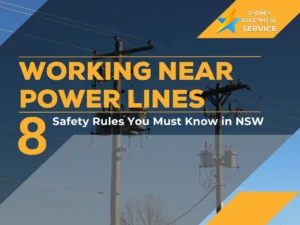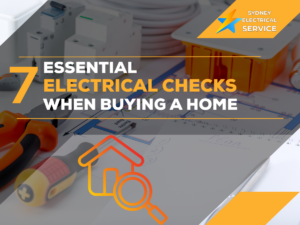Google Reviews ⭐⭐⭐⭐⭐

Does Your House Have Any of These Electrical Problems?
When an electrical fault occurs in your home, it’s a good idea to determine the cause of the problem. After all, you and your family’s personal health and safety is of paramount importance.
Of course, you need to know what symptoms to look out for, and how to investigate the problem safely. Sometimes the issue may be a recent storm, a faulty appliance, or the incorrect wattage of a bulb. But more complex and persistent electrical faults may need to be assessed by a professional electrician in Sydney.
Here’s what to do if you ever experience any of these electrical problems.
Electrical Surges
Most electrical surges are caused by lightning strikes, damaged power lines, faulty appliances, and poor wiring in the house. While a surge only lasts for a microsecond, frequent surges can cause significant damage to your electrical equipment, and rapidly reduce their life expectancy.
If you are experiencing frequent surges then the culprit is most likely a faulty appliance or poor wiring in the house. To track down the culprit appliance, gradually unplug your electrical goods one-by-one until the surges stop. If they still occur, then the issue could be due to faulty wiring, which only a certified Sydney electrician can resolve.
Light bulbs Burning Out Quickly
If your light bulbs are burning out too often, the wattage of the bulbs may be higher than what the socket can handle. Make sure all your ceiling lights are at the correct wattage. To find this out you may need to consult your building plans or, if you are renting, ask your real estate agent.
What if the wattages are correct? Then the problem could be due to poor circuit wiring. In this case, ask your Sydney electrician to investigate the workmanship of the wiring and rectify the problem.
Voltage Sags and Swells
Voltage sags and swells are two different abrupt changes in the supply of voltage.
A voltage sag results in a brief reduction in voltage of 10 percent below the specified equipment voltage. While a voltage swell results in a brief increase in voltage of 10 percent above the specified equipment voltage.
These instances typically cause the lights to flicker or dim, and electrical equipment to suddenly switch off/on. They are often the result of a poorly made appliance connected to your electricity. In more serious cases, the cause is poor electrical workmanship and faulty wiring.
Frequent sags and swells can lead to electrical arcing, which can result in a serious electrical shock.
Light Switches Not Working Properly
Does your light dimmer cause the lights to flicker or dim inconsistently? If so, the dimmer may be of low-quality or not have been installed properly.
Got a mysterious light switch that seemingly does nothing when turned on? If so, the switch may have once been used to operate a fixture that no longer exists (i.e. ceiling fan or light). But if these fixtures are still there – and the switch does nothing – the wiring may need to be serviced.
Overloaded Circuit
Many older houses are not equipped to handle the electrical demands of today. Especially larger families who are frequently charging phones, laptops, and other devices in nearly every room.
Another issue is when a house does not have enough electrical outlets to power our everyday appliances. As a result many people resort to using power boards. This can increase the risk of overloading the circuit.
If your circuit breakers are frequently tripping, avoid the issue by:
- Do not daisy-chain power boards together.
- Unplug appliances that are currently not in use – many devices suck up power when in stand-by mode.
- Where practical, spread out your electrical appliances around the house, to help reduce the burden on a single circuit.
- Avoid over-using long extension cords – they make your tools and appliances work harder to operate.
Exceedingly High Electrical Bills
There are many ways to reduce your electricity bills without impacting your lifestyle. Here are some helpful tips to slash your energy costs:
- Replace incandescent light bulbs with energy-efficient LEDs.
- Unplug appliances and device chargers when not in use.
- Consider investing in better home insulation to reduce your reliance on heating and cooling devices.
- Wash your clothes in cold water.
- Compare energy providers and, where practical, switch to a better service provider.
Are you experiencing any of these household electrical problems? Talking to your local electrician in Sydney can really make a difference to your everyday living. For FREE advice contact Sydney Electrical Service on 0433 462 902.












